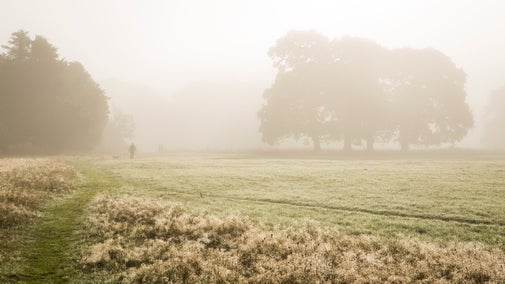
Donate
Everyone needs nature, now more than ever. Donate today and you could help people and nature to thrive at the places we care for.

A secluded population of pearl-bordered fritillary, an increasingly rare butterfly, continues to hang on in Ceredigion on the coastal slopes of Cwm Soden. A habitat restoration and creation project is now under way in a bid to save this butterfly’s natural home.
Cwm Soden, an isolated combe on the Ceredigion coast, is one of the last places in Wales where the pearl-bordered fritillary still thrives. They're recognisable for the two large silver pearls and row of seven outer pearls on the underside hind wing. Flying close to the ground, they stop regularly to feed on spring flowers.
Cwm Soden is a steep-sided valley with ancient woodland nestled in the valley floor. It’s a landscape that is diverse, complex and has a long history of being coppiced, or managed, as a sustainable source of fuel and materials. The coppicing would have had the added benefit of providing habitats for a range of wildlife, in particular the pearl-bordered fritillary, a spring butterfly most at home in woodland clearings, wooded glades and coppiced areas.
The coppicing work has now sadly lapsed and the trees have grown mature, shading out the valley floor and reducing the amount of available habitat for the butterfly. Today the remaining pearl-bordered fritillary population is dependent on bracken banks and is on the brink of disappearing from Cwm Soden entirely.
Work to save the butterfly population began in 2017 with funding from Natural Resource Wales and support from the Butterfly Conservation Trust and the Ceredigion Biodiversity Partnership.
The project aims to recreate some of the coppicing techniques of the past, in order to protect wildlife in the valley for the future. The valley floor will be fenced, and grazing will be introduced to the meadows, while the number of pony rides in woodland areas will be cut back, along with changes to the way the farm which sits above the Cwm Soden valley is managed.

Work has already begun on cutting trees and bracken along the woodland ride and glades, with the ponies preparing the ground for flowers to grow. Positive signs are already in evidence with a significant increase in flowering plants like dog violet, a key species for the pearl-bordered fritillary.
Changes in woodland management at Cwm Soden are only the beginning. To give the butterfly population the best chance of survival, their habitat needs to be expanded beyond the Cwm Soden valley.
Sitting above the valley is the National Trust farm, Caerllan, a perfect example of a traditional West Wales farm with its small fields and rambling historic boundaries and edges. The hedges that weave through the fields act as highways to help wildlife move across the landscape. This is of particular importance at Caerllan as the pearl-bordered fritillary’s habitat is under huge pressure in the adjacent valley.
Once the fortunes of the species start to improve, these hedges will provide a vital nectar source for the butterflies, creating a link between Cwm Soden and the neighbouring valley at Cwm Tydu and vastly expanding the habitat available.

Everyone needs nature, now more than ever. Donate today and you could help people and nature to thrive at the places we care for.

Conservation work has been taking place at Llanerchaeron to restore the pleasure grounds to their former glory and reinvigorate meadows and grassland.

You can enjoy a walk and see a variety of wildlife year-round at Llanerchaeron in the parkland, woods, meadows and of course the working farmyard.

With support from the Government’s Green Recovery Challenge Fund, we're looking for ways to protect our environment and combat climate change. Find out more about the work we're doing.

Climate change is the single biggest threat to the places we care for. Take a look at our environmental pledges as we adapt, reduce carbon emissions and address the damage already done.